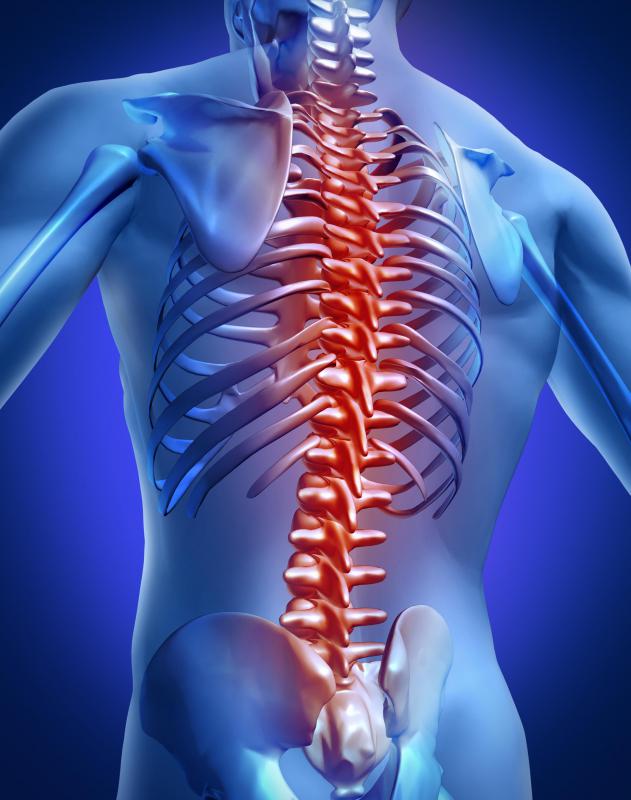At WiseGEEK, we're committed to delivering accurate, trustworthy information. Our expert-authored content is rigorously fact-checked and sourced from credible authorities. Discover how we uphold the highest standards in providing you with reliable knowledge.
What is a Facet Rhizotomy?
The pain alleviating procedure, facet rhizotomy, typically involves highly skilled physicians applying radio waves to the nerves of the lower spine using wires threaded through needles. Possible candidates for the procedure include those experiencing fair to no relief from other treatments, which may have included steroid injections. Individuals usually undergo the spinal procedure on an outpatient basis with no adverse effects.
Interventional pain physicians or spinal surgeons generally perform facet rhizotomy, also known as medial branch neurotomy. The general concept is that the application of radio waves burns or ablates the nerves that are sending pain signals to the brain. Once disabled, signals are no longer transmitted and the patient obtains relief. Two or three specific nerves usually contribute to the cycle of pain. These nerves are typically located beneath the spine, in the lumbar region, where there is no cartilage protection.

The pain most patients experience involves facet joint arthritis. Root nerves affecting muscle sensation and movement are also usually located in this area. Physicians must be precise in the placement of the needle probes to prevent unintended muscle nerve damage. As a precaution, persons chosen for facet rhizotomy typically only experience pain in a specific localized area. Prospective candidates must not exhibit muscle weakening or reflex loss, which normally indicates muscular involvement.

Patients generally do not require special preparation prior to the radio frequency nerve ablation procedure. Before starting the actual facet rhizotomy, they typically receive a venous puncture and a mild sedating medication that aids in relaxation. Physicians generally inject the area of the spine receiving ablation with a local anesthetic. Using a live, x-ray type scanner, surgeons insert the needle probes. After the correct position is determined, the probes are heated using radio frequency wave impulses, which transmit the signals to the applicable nerves.

Once the facet rhizotomy is completed, the surgeon removes the needles and covers the insertion site with a bandage. Patients might experience discoloration, swelling and discomfort from the procedure, and physicians generally recommend using ice and nonprescription medications for the discomfort, which typically subsides within a few days. Normal physical activity is generally resumed within 24 hours.
Physicians advise that patients experiencing any adverse reaction seek medical intervention. Possible complications include chills or fever, extended or increased pain, and bleeding or fluid drainage from the injection site. Other possible serious conditions include weakness or numbness that lasts more than three hours.
Surgeons report that more than half of patients receiving facet rhizotomy obtain close to complete pain relief in about one year. Other patients might obtain up to up to 60 percent improvement. The process may be repeated, increasing the chances of success.
AS FEATURED ON:
AS FEATURED ON:













Discuss this Article
Post your comments